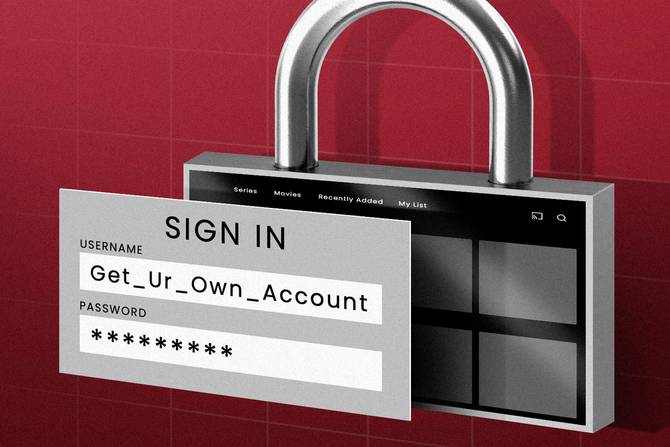Hello, Wednesday! Summer might be in full effect, but one beloved tasty treat has seen its last days: the Choco Taco. Farewell, our frozen, folded friend. We’ll never forget you.
In today’s edition:
 Post-password Post-password
 Respect the remote Respect the remote
—Tom McKay, Billy Hurley, Patrick Lucas Austin
|
|
Francis Scialabba
Nowadays, facial recognition can open your iPhone and the right fingerprint will log you into your work laptop.
As our everyday devices gain non-password authenticators, however, a study from Ping Identity and Yubico finds IT leaders predict resistance to the biometric option in their organizations: While 84% of global IT leaders consider passwords “a deceptively weak way to store your data,” 97% of respondents currently without passwordless authentication predict barriers in implementing the technology, citing a lack of urgency, technical expertise, and buy-in.
“Many of these roadblocks are not technological, but cultural,” reads the report. While 93% of the 600 IT leaders surveyed said that their organization is “at least somewhat likely” to adopt passwordless authentication, 88% of those without passwordless authentication believe their organization would be resistant to adopting it.
To overcome the “cultural” barriers, organizations must emphasize two ideas, according to industry pros who spoke with IT Brew: communication and ease of use.
What’s the holdup?
While passwordless options like biometrics, pins, and hardware security keys take the guessable character-string option away from the hacker, the old authenticator is difficult for companies to quit—a reality that irks Zain Malik, senior product marketing manager at Ping Identity.
“It’s kind of frustrating because there are less limitations than ever before, less barriers to entry. Our devices are now enabled with biometrics,” Malik told IT Brew. “So, it’s just a general human resistance to change.”
Take it easy
Passwordless implementation may have complicated hurdles: A thumbprint reader could be a fine option for an office worker, but not for factory-floor workers who are wearing gloves, said Malik. Legacy systems may not be ready to handle tokens.
To get buy-in from resistant humans, Terry Jost, managing director and global security and privacy segment leader at Protiviti, emphasizes the importance of keeping the authentication path simple.
“I think that the more you can make it easy for people to access their tools and their applications, then I think most people will go along with it,” said Jost.
Read the rest here.—BH
Do you work in IT or have information about your IT department you want to share? Email [email protected] or DM @BillyHurls on Twitter.
|
|
|
Brainstorming, project planning, and journey mapping often lead to innovative breakthroughs, but if not executed well, they can also make a mess of group meetings. To help them work together more effectively, your team needs the right tools and practices.
MURAL is the collaboration space that lets you host more engaged meetings, gain deeper alignment, make faster decisions, and bring innovative ideas to life.
And no need to register for another meeting medium: MURAL is a *free* solution that pairs seamlessly with Slack, Zoom, Webex, Jira, and Microsoft Teams to help your tech teams collaborate from road map to retro—and from anywhere, at any time.
Help your teams turn messy ideas into high-impact outcomes. Get started with MURAL today.
|
|
Insta_photos/Getty Images
There’s good news for IT and cybersecurity pros who have grown comfortable working from the couch: You might not need to leave it anytime soon, even if you’re planning on changing jobs. With ongoing talent shortages, the market remains hot for applicants with the kind of skills the Covid-19 pandemic put a premium on.
Not only can prospective hires look for jobs in regions that used to be too far away from where they live, experts told IT Brew, but there is increased demand for the technical skills needed to support the permanent transformation of work-life arrangements across the country.
Skills in demand. Gartner research has shown that of all job functions it tracks, IT has the most opportunities for remote work. It found 37% of IT job listings in the US, UK, and Canada from November 2021 to February 2022 advertised some combination of fully remote, temporarily remote, or hybrid work models. Skills related to software development and cloud computing, like continuous integration/continuous delivery (CI/CD), Docker, and React, tend to be the most location-flexible.
Alex Michaels, a principal advisor at Gartner who specializes in cybersecurity and risk management, told IT Brew that remote work has made it easier for cybersecurity pros to find employment—mostly because hordes of other telecommuters have resulted in “increased prioritization of cybersecurity from the business.”
The factors driving these changes—including digital transformation, new cybersecurity regulations, and the shift from project-centric to product-centric delivery—have increased the need for security analysts and engineers to have non-technical competencies, he added. That might mean end-user interaction or supporting business priorities rather than just security projects.
Developing these skills can be “significant differentiators between you and your competitors with similar certifications and/or experiences,” Michaels wrote in an email.
“As security loses sight of an organization’s distributed technological infrastructure, competencies like digital dexterity, collaboration, and adaptability have become even more critical to the security of your organization,” Michaels wrote. He added that Gartner had tracked a rise in demand for “specialized roles in awareness, insider threat, third-party risk, and endpoint security across its client base to meet the increased risks associated with remote work.”
Read more here.—TM
Do you work in IT or have information about your IT department you want to share? Email [email protected] or DM @thetomzone on Twitter. Want to go encrypted? Ask Tom for his Signal.
|
|
|
The future of selling is…up in the air. Tackle polled senior leaders representing software companies across multiple industries to get the pulse on the role of cloud marketplaces. For predictions, trends, and expert insights, check out the State of Cloud Marketplaces Report.
|
|
Today’s top IT reads.
Stat: 74 gigabytes. That’s the amount of data connected to pro-life evangelical Christian organizations leaked by hackers. (CyberScoop)
Quote: “As a result of the fraudulent scheme...defendant Stollery obtained approximately $21 million in the form of various digital assets, such as Ether and Bitcoin, and cash from dozens of investors located in at least 18 states, including California, and abroad, who purchased BAR.”—the Department of Justice in a lawsuit against cryptocurrency investment company Titanium Blockchain Infrastructure Service’s CEO Michael Alan Stollery, who pleaded guilty to one count of securities fraud on Monday (Ars Technica)
Read: Both Google and Ring have acknowledged their ability to provide law enforcement with video footage without user consent or a warrant in “emergency situations.” (CNET)
Step one: Building a sustainable hybrid workplace won’t happen in a day. Robin’s guide helps you create your unique workplace strategy, optimize with the right tech, and track success. Start here.*
*This is sponsored advertising content.
|
|
-
Spotify is discontinuing its Car Thing auto accessory just five months after it was made available to the general public.
-
Microsoft is making it easier for businesses to switch to Windows 11 with two new kits designed to make onboarding and IT administration easier.
-
Rockstar Games’ upcoming Grand Theft Auto VI will apparently feature a playable female protagonist—a first for the open-world video game—who is Latina.
-
Facebook is bumping up the price of its almost-two-year-old Meta Quest 2 VR headset by $100 due to rising production costs.
|
|
Morning Brew
We asked Morning Brew readers about their thoughts on inflation and found out most of you have already cut back on costs. (So, basically no more ordering DoorDash 7x/week.)
Check out the full results of our survey here—and see how other readers are reducing their spending.
|
|
|






